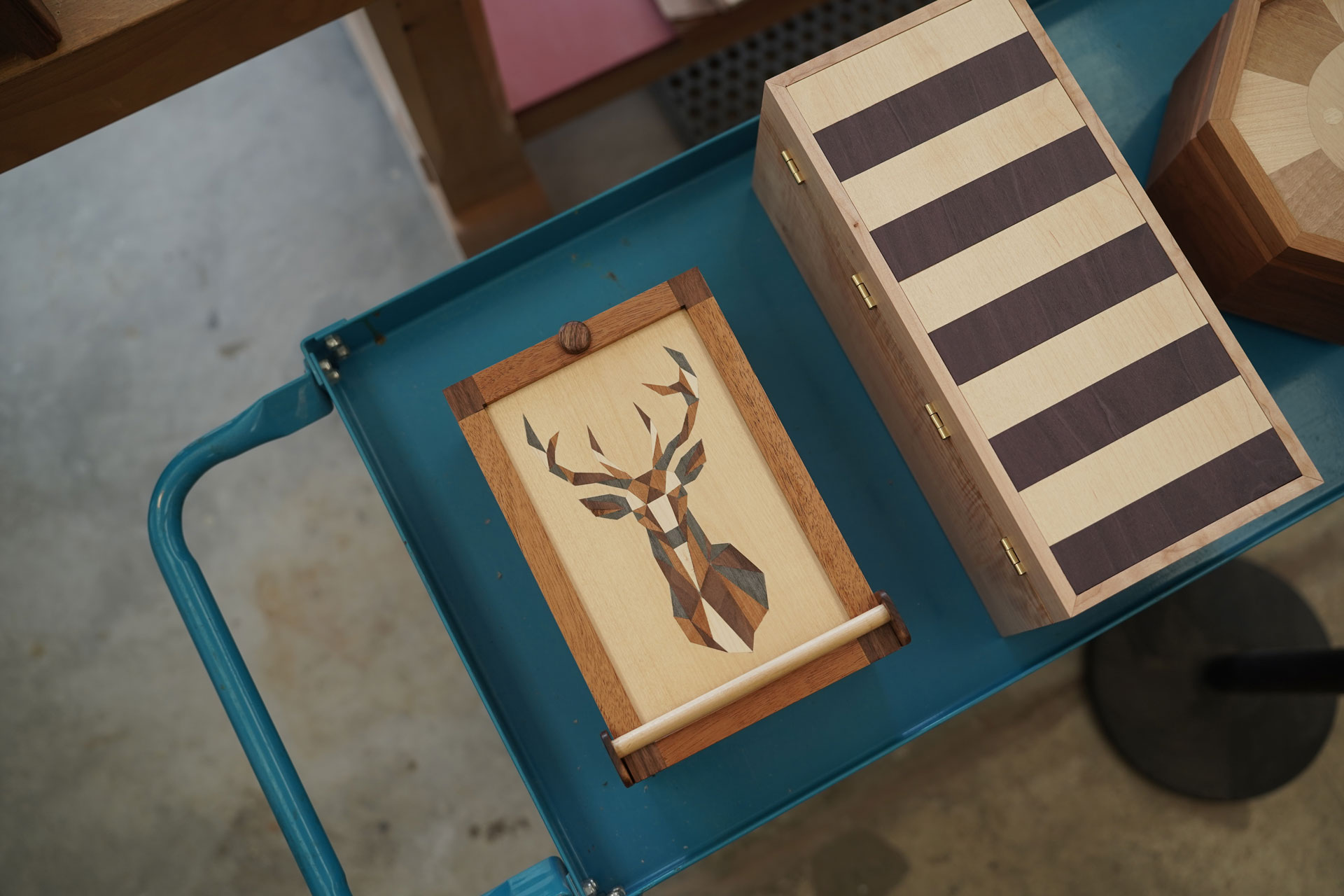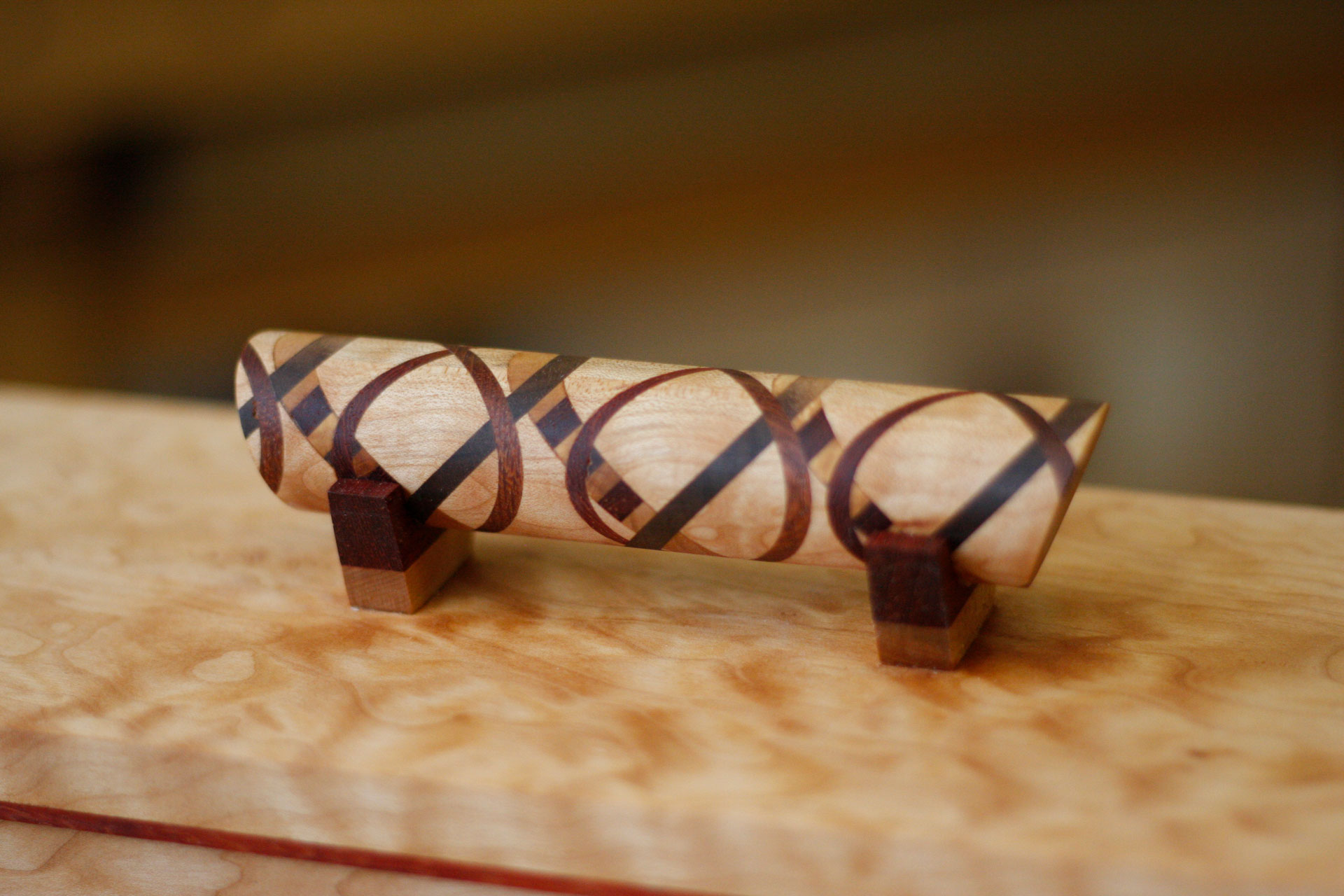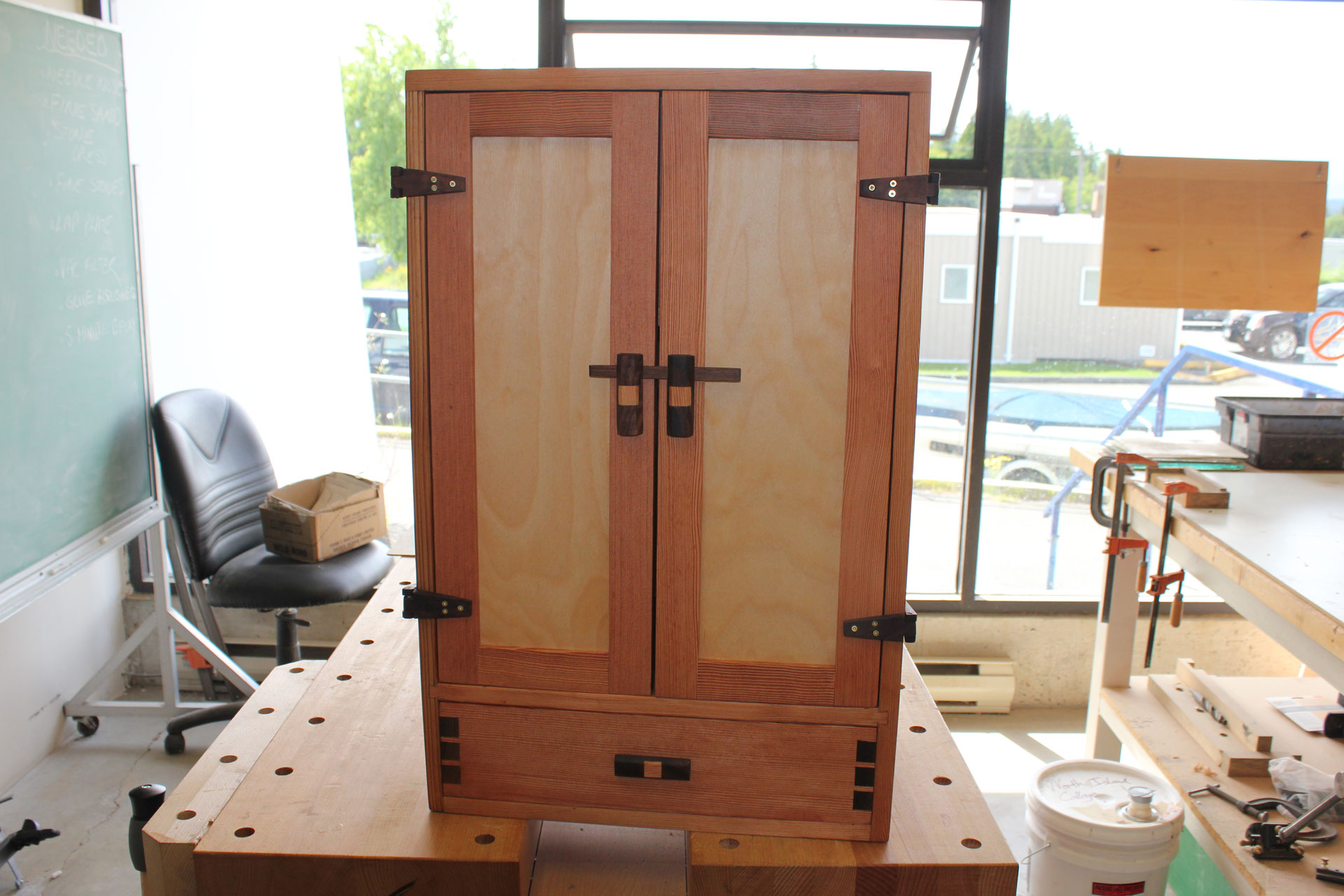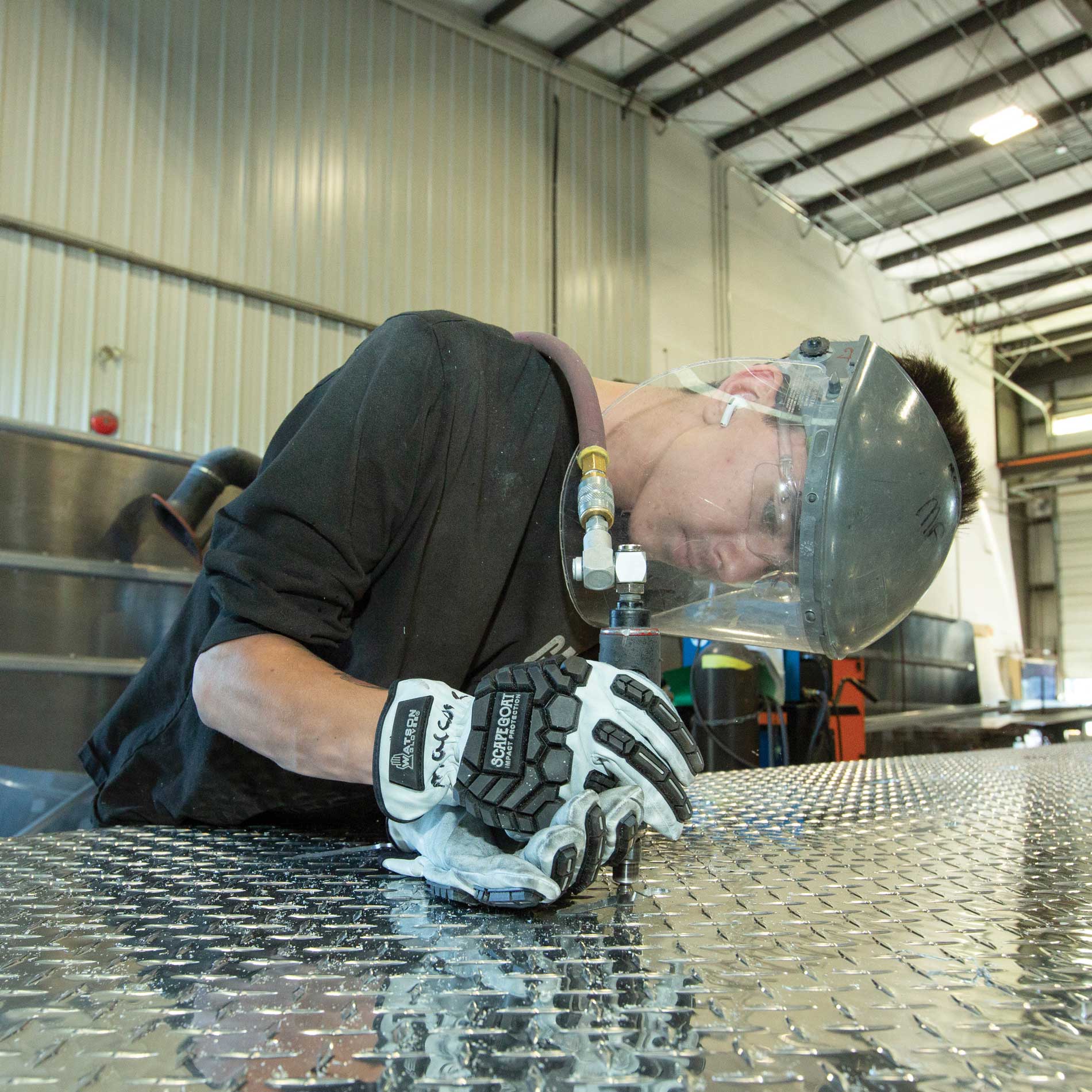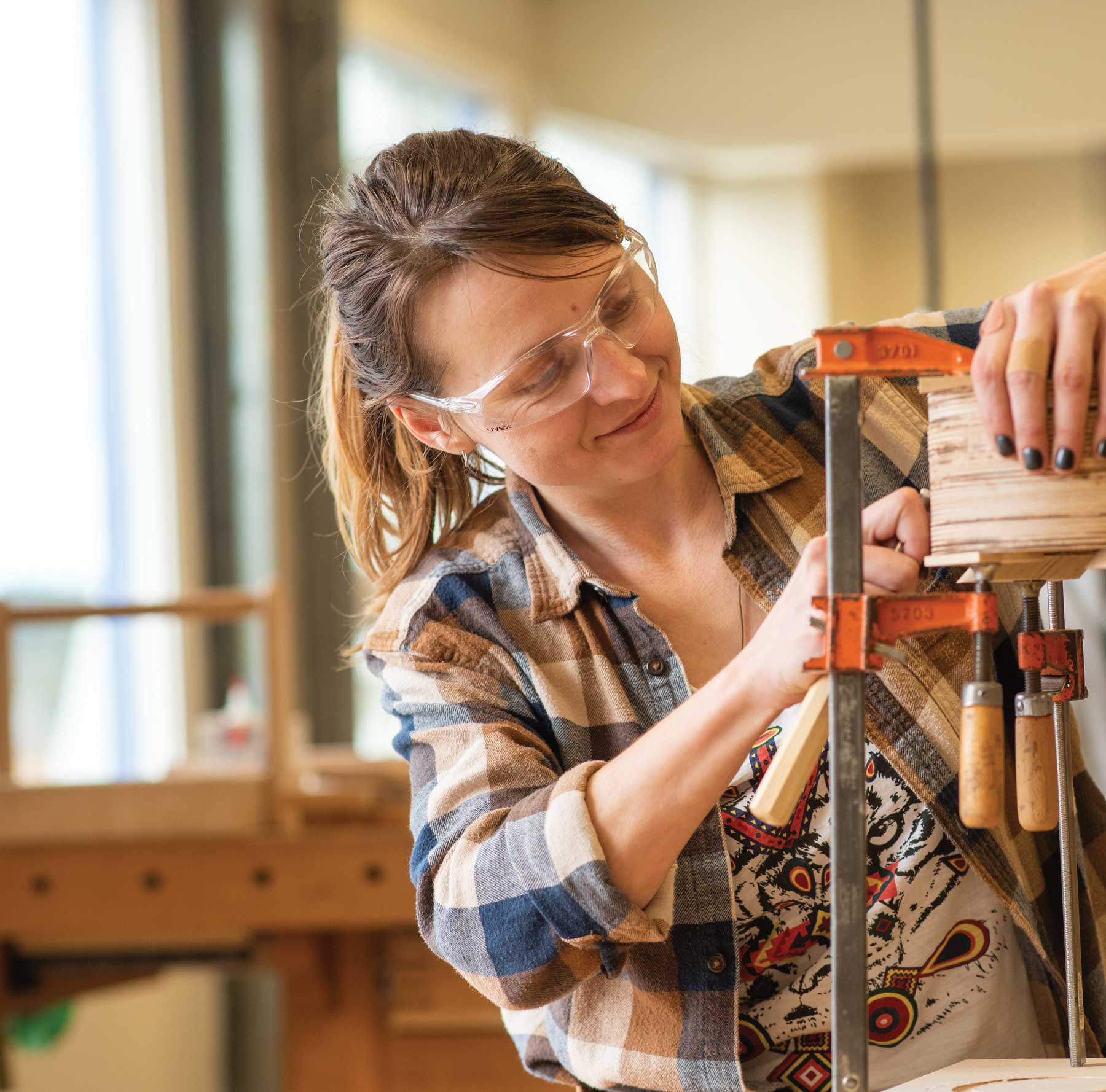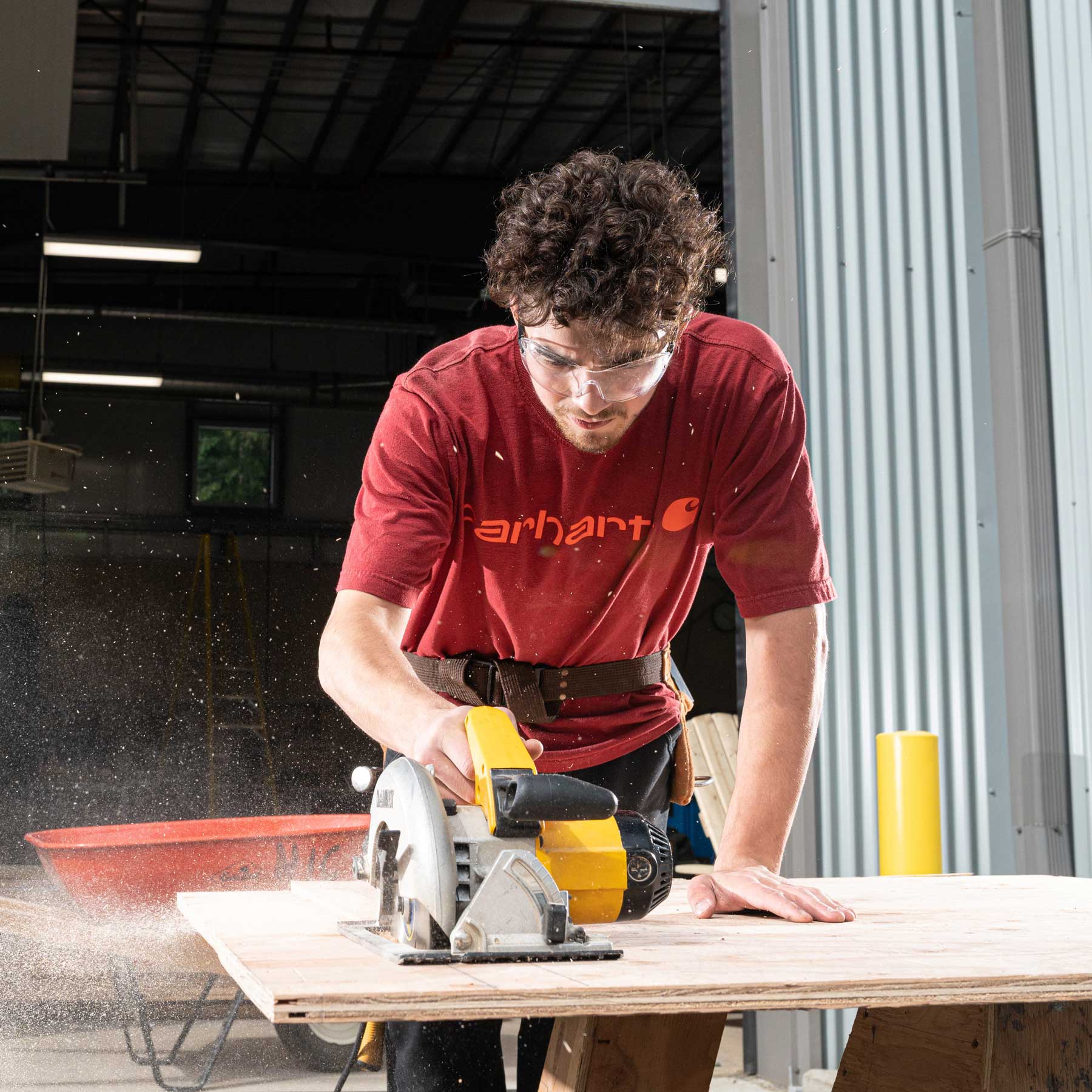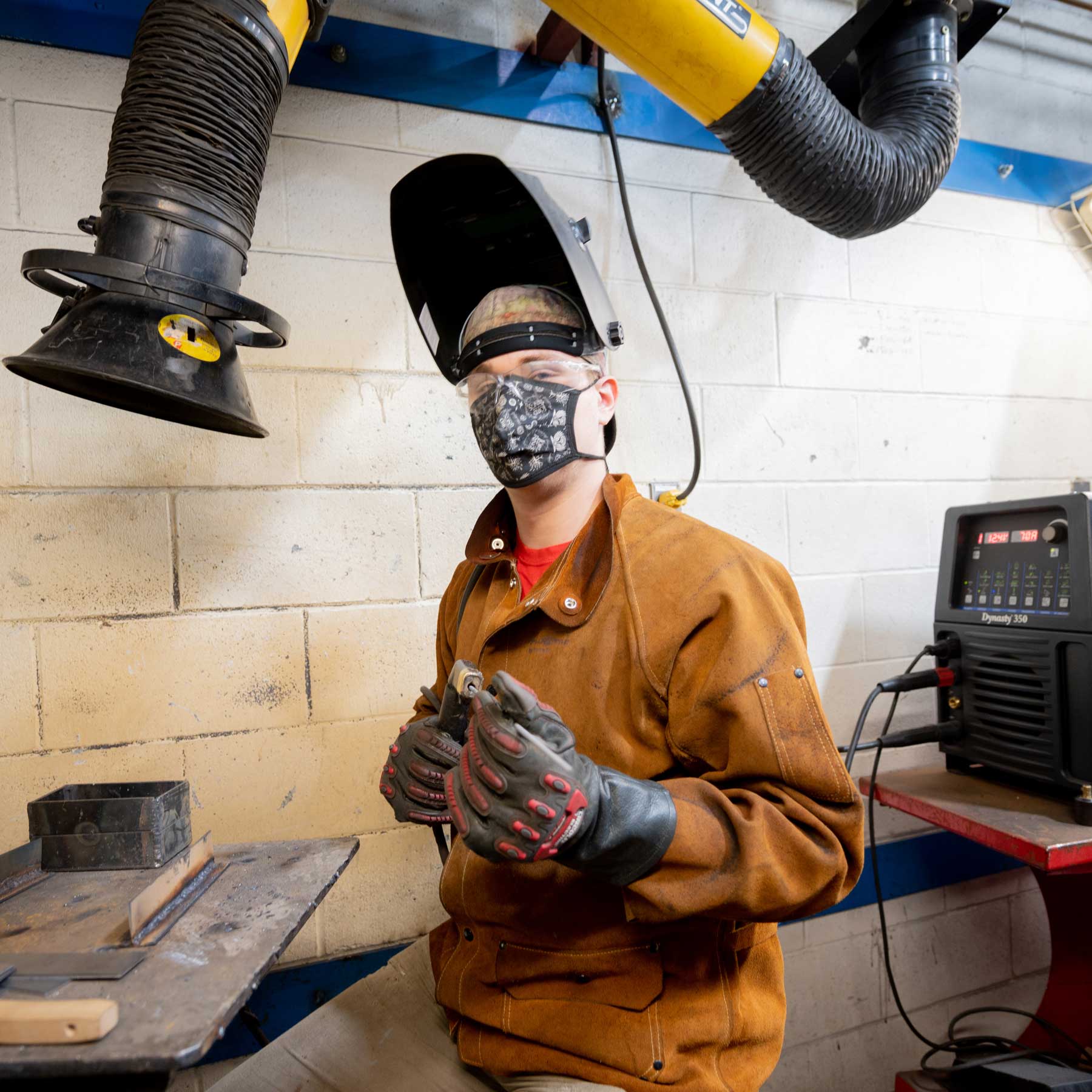Furniture Design and Joinery Certificate
| Certificate | |
| Priority admission for Indigenous students | |
| International applicants welcome - CIP 48.0701 (PGWP eligibility) |
Stay connected
Get program updates and event news straight to your inbox.
Applications open. |
Overview
In this certificate program, you’ll learn foundational design principles and elements. Then, you will apply this knowledge to create your own shop projects.
You'll learn:
- Shop drawing with free-hand sketching and computer drawing programs
- Proper usage of hand tools, power tools and larger woodworking machines
- Shop safety practices
- Sustainable building materials and practices
After you graduate, you can find work in a small shop or in high-end industrial facilities with advanced machinery.
There are two pathways to your red seal certification. A certificate program that gives you the basic knowledge and skills to enter a trade.
You don't need an employer/sponsor. This pathway combines on-the-job training with classroom learning. Pick this option
if you're working and sponsored by a company registered with SkilledTradesBC. Foundation vs. apprenticeship
Foundation
Apprenticeship
Requirements and courses
Schedule
This program is scheduled four days per week, Monday through Thursday.
Supplies
Materials:
Students are responsible for the material costs of their projects. These costs will
vary from $500 to $1000 based on the design of the project and the materials selected.
Texts:
Visit the NIC bookstore for a current list.
Stationery (Available at the NIC Bookstore):
- Pencil and pen
- Sharp TI-30Xa (recommended)
Safety Equipment:
- WorkSafe-approved safety glasses (clear and non-tinted)
- WorkSafe-approved hearing protection
- Closed-toe heavy leather boots
Tools:
All tools are supplied
Careers
This education pathway will help you get ready to become a Red Seal certified Cabinetmaker (Joiner).
Costs
Check the table below for estimated costs for the full program.
Curious about funding?
Financial support is available. Learn more about financial aid and awards.
How to apply
Apply for this program through EducationPlannerBC. After you’ve applied, you’ll receive an email from NIC with your next steps. Be sure to add @nic.bc.ca to your safe sender list.
Questions? We’re with you along the way. To contact a recruiter, email futurestudents@nic.bc.ca.
Your path to Red Seal Certification
Frequently asked questions
Trades training prepares students for hands-on careers in skilled trades such as construction, mechanics, electrical work, plumbing, culinary and more. Programs combine classroom learning with practical, industry-specific skills.
NIC’s trades programs include:
- Automotive Collision and Refinishing Foundation
- Automotive Service Technician Foundation
- Carpentry Foundation
- Electrician Foundation
- Fabricator-Welder Foundation
- Furniture and Joinery
- Heavy Mechanical Trades Foundation
- Instrumentation and Electrical Automation
- Motor Sport and Power Equipment (motorcycle) Foundation
- Plumbing and Piping trades Foundation
- Parts and Warehousing Foundation
- Trades Sampler
- Welder Foundation
Typically, NIC offers:
- Pre-apprenticeship (Foundation) programs: Level 1 Foundation training to prepare for entry-level positions.
- Apprenticeship programs: A combination of on-the-job training and classroom instruction, Level 1-4.
- Specialized certifications: Training in specific skills or safety standards, such as welding or forklift operation.
The duration depends on the type of program, but generally are:
- Pre-apprenticeship programs: Level 1 training is about 24-36 weeks.
- Apprenticeship levels: Typically 5 to 17 weeks in-class training per level, with multiple levels required for certification. There are usually 4 levels required to complete before writing the Red Seal certification exams.
- Certifications: Often a few weeks to a few months.
- To find an employer willing to sponsor you as an apprentice.
- To register with your province’s apprenticeship authority.
- To attend required technical training at a college.
NIC can help with these steps, reach out to the Trades department at trades-technicalprograms@nic.bc.ca
Yes, trades students may qualify for:
- Government grants or tax credits.
- Apprenticeship incentives for both students and employers.
- Scholarships or bursaries specific to trades programs.
NIC can give you information around funding and scholarships, reach out to the Trades department at trades-technicalprograms@nic.bc.ca
Absolutely! Colleges and industries actively encourage diversity in trades and often offer supports, mentorship programs, and funding for women and underrepresented groups.
NIC has funding available, reach out to the Trades department at trades-technicalprograms@nic.bc.ca
